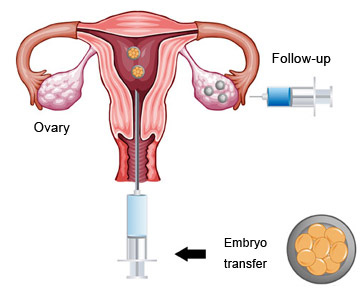FET
Freezing of embryo is done to increase the chances of pregnancy for every hormone stimulation cycle and egg collection.
During a fresh IVF Cycle, sometimes we will be able to create more than a single embryo but there are severe risks associated with this chances of multiple pregnancies and due to this we don’t transfer more than one embryo at a time. Therefore, it is recommended to transfer one and freeze the other embryos obtained during the IVF cycles that can be used during the FET cycle in future.
Success rates for FET cycles vary from couple to couple by the chosen program handling the case. Some of the programs have low pregnancy success rates whereas other IVF treatments have live birth rates of over 50 % per transfer procedure for women under 35 for frozen-thawed transfer cycle.
On an average, the success rate is near about 30 % but it widely depends on the age of the women’s eggs when the embryos from the egg are frozen. Therefore, when the age of the women is 38 and the embryos are frozen from the women’s first IVF cycle than the women of age 42 , the chances of fertility are more .
After the FET procedure, once you are satisfied that your family is complete and you have no use of the yours frozen embryos for you personally then one can decide to donate it to the another couple who are facing infertility problem due to inability to conceive with their own embryos and for further clarification one can discuss them with their specialist.
While IVF treatment is under process, the excess embryos are taken and frozen in cryostorage which can be used according to your requirement either for personal use to conceive ,donation purpose or to discard them.
The basic service for FET is provided at the initial cost of $450 that includes freezing fee and the six-month storage charges which further invites the fee of approx $250 for the next six-month storage as charges and these may differ from hospital to hospital.
Get an expert medical opinion.

 from the previous IVF cycle are warmed up and transferred back into woman’s uterus meaning that there is no need for the other cycle of hormone stimulation or egg collection.
from the previous IVF cycle are warmed up and transferred back into woman’s uterus meaning that there is no need for the other cycle of hormone stimulation or egg collection.











